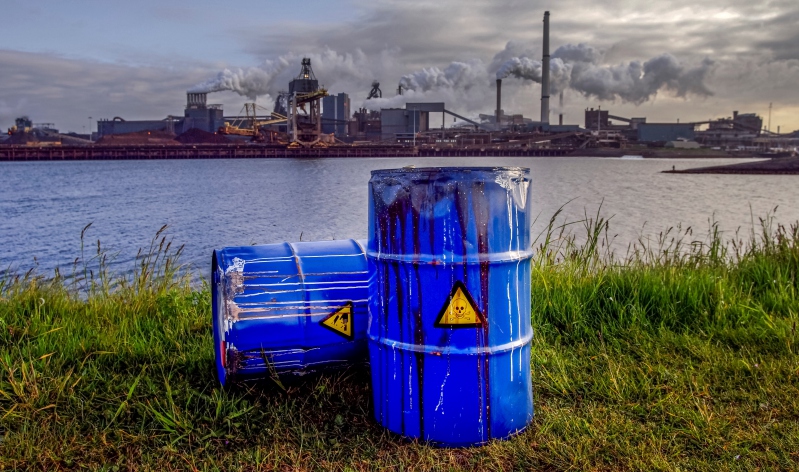
Scientific research generated by civil settlements could help drive future EPA regulation.
“All people need access to clean and safe drinking water.”
A U.S. Environmental Protection Agency (EPA) official said those words, promising that the agency under the Biden Administration would act to address a looming public health concern in the U.S. water supply—PFAS.
Perfluoroalkyl and polyfluoroalkyl substances (PFAS) are a large group of human-made chemicals. Thanks to a highly stable fluoride-carbon bond, PFAS tend to accumulate in the environment rather than break down. PFAS are not only found in drinking water but also in food and even the air. They are probably in your blood, too.
This is a problem according to an increasing number of studies that warn that some types of PFAS can cause severe disease, including cancer.
EPA started to investigate PFAS in the early 2000s. Yet the agency has just begun to develop a comprehensive regulatory scheme. In a decades-spanning effort to address PFAS in drinking water and consumer products in the absence of EPA action, individuals and environmental activists turned to another regulator: the courts. The resulting litigation may herald a new era for the enforcement of chemical safety standards.
PFAS are not the first chemicals to spawn years of litigation. A variety of chemicals have led to “toxic torts,” a common, though complex, type of civil lawsuit. Yet PFAS litigation is novel because it did not follow on the heels of government or academic epidemiological research. Rather, PFAS litigation has generated its own new findings.
These findings were the work of an independent panel of three epidemiologists tasked with investigating the health effects of exposure to PFOA, a type of PFAS. As part of a settlement between chemical manufacturer DuPont and a class of individuals claiming to have been harmed by PFOA discharged from a DuPont plant near Parkersburg, West Virginia, DuPont and the class action plaintiffs jointly appointed the panel.
Two legal tools made it possible to transform this settlement into an epidemiology lab: class actions, and medical monitoring. First, class actions structured according to both federal and West Virginia law can bring together large groups of plaintiffs seeking money damages. The Parkersburg suit had a class of nearly 70,000 people.
Second, West Virginia recognizes “medical monitoring” as a civil remedy that courts can impose. In West Virginia and other states with this remedy, courts can order a defendant to pay for medical exams when plaintiffs are uninjured but have proven that they are at higher risk for certain diseases because the defendant’s actions exposed them to a toxic chemical.
The existence of a medical monitoring remedy meant that DuPont faced an increased chance of an unfavorable trial verdict, as the lack of actual injury caused by the defendant normally keeps plaintiffs from winning in other state courts. DuPont could not rely on the fact that plaintiffs in the West Virginia case could not prove that PFOA was toxic. EPA had already targeted DuPont for failing to notify the agency about PFOA’s toxicity—acting on information that plaintiff counsel Rob Bilott gathered while working on another PFOA exposure suit. Rather than take the risk of going to trial, DuPont settled.
Together, these two tools—class actions and medical monitoring—created a conducive environment for scientific research in the absence of EPA regulation. The class voted to make settlement awards contingent on medical testing, which gave the panel access to data from thousands of people exposed to PFOA. DuPont agreed to provide funding for the panel on the condition that a finding of “no probable link” between PFOA exposure and human disease would end the company’s liability, including for medical monitoring.
As a result, the panel’s members had the resources and the freedom to conduct multiple studies over seven years. Eventually, they found a “probable link” between PFOA exposure and two types of cancer as well as thyroid disease, ulcerative colitis, pregnancy-induced hypertension, and high cholesterol. Subsequent research has uncovered more links.
Now other companies using PFAS, such as 3M, have settled similar lawsuits. Multidistrict litigation over PFAS in firefighting foam is ongoing in a federal court in South Carolina. Some observers familiar with toxic torts predict that PFAS litigation may soon rival asbestos litigation in size and complexity.
Asbestos litigation grew, in part, because the Toxic Substances Control Act of 1976 made it difficult for EPA to regulate most commercial chemicals—even those known to be toxic, such as asbestos. But PFAS have something that asbestos did not have for decades: EPA’s attention.
Amended in 2016, the Toxic Substances Control Act now gives EPA the unenviable duty of testing the thousands of commercial chemicals, including PFAS, that went unregulated under the old version of the law. Accordingly, EPA’s new scrutiny of PFAS use could lead to a comprehensive regulatory scheme that removes the need for robust private litigation.
With so much still unknown about PFAS, though, there could still be a role for more settlement science panels in the near future. Because toxic chemicals can wreak havoc on entire communities, upending lives for generations, potential future plaintiffs may not be hard to find.



